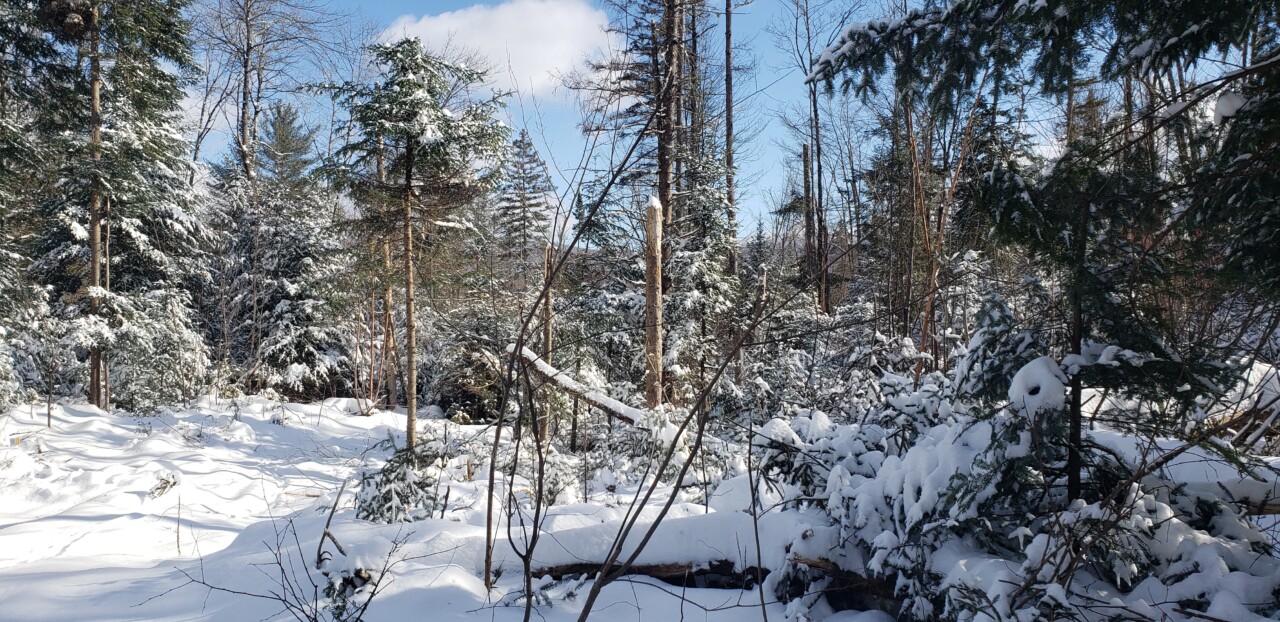Strapping on snowshoes and bundling up for a cold afternoon out in the woods, landowners residing within the Bean Brook watershed in Newark met earlier this month to tour a recently completed timber harvest. County Forester, Matt Langlais, led participants in discussions with the consulting forester for the harvest, Charlie Stabolepszy (F&W Forestry), about the various goals, thoughtful planning, and process that were key to setting up and making this timber harvest a successful one. During the tour, participants were able to see various wildlife habitat (snags, downed wood, and large diameter eastern white pines) and ecological features (riparian areas) that were protected or enhanced during this harvest, as well as the extra planning that will allow for skiing on the logging trails after the timber harvest is wrapped up.
The Bean Brook watershed spans 14,080 acres and is the East Branch of the Passumpsic River’s major tributary. This watershed is also part of an important forested wildlife corridor between the spine of the Green Mountains and the sparsely populated and dense forests of Essex County, northern New Hampshire and Maine, and Canada. The landscape changes drastically north and south of this singular corridor, where forests become more fragmented by farmland and human development. The network of riparian areas and forested corridors provides a crucial element of landscape connectivity for wildlife movement and will ultimately play a major role in allowing plant and animal species to colonize new and appropriate habitats as climate and land uses change.
Thoughtful planning by foresters and landowners, such as the planning behind this timber harvest, will be critical for the longevity of landscape connectivity. Communication and collaboration among neighboring landowners is also a key strategy for protecting the large, connected forest blocks in Vermont. NorthWoods helps to support these landowner networks through events like this. If you’re interested to learn more, or want to see this type of event in your neighborhood, let us know!

Harvesting efforts have opened up the canopy here where spruce and fir were declining. Leaving material on the ground helps provide critical habitat for a variety of species by creating vertical structure and allowing regeneration of new vegetation to take hold.

Landowners stop to take a look at how the width of trail might be utilized by wildlife in the coming years. Soft mast species (like raspberries and blackberries) are assumed to take over the edges of the trails, which will provide food sources for a variety of wildlife species, such as black bear. Large diameter trees (such as the eastern white pine found to the left) may be used as babysitter trees for cubs, while the mother bear is off foraging for berries nearby.

Snags and downed woody material were left alone throughout much of the harvest area and any timber taken off the property was carefully planned out. Trails created through the harvest will eventually be used for recreation.

